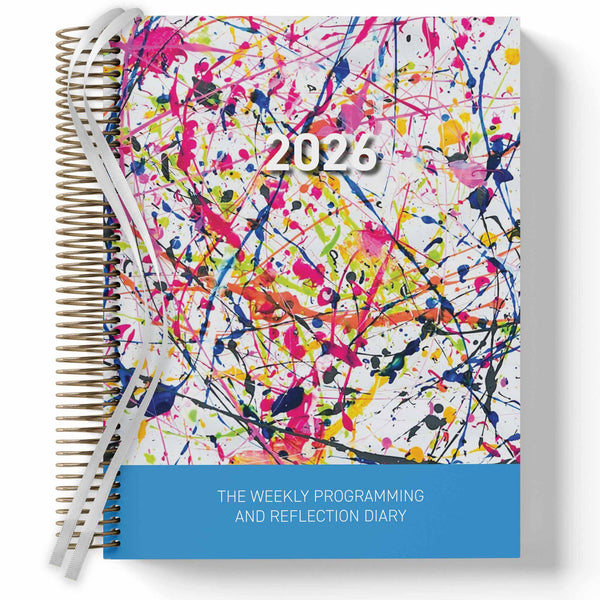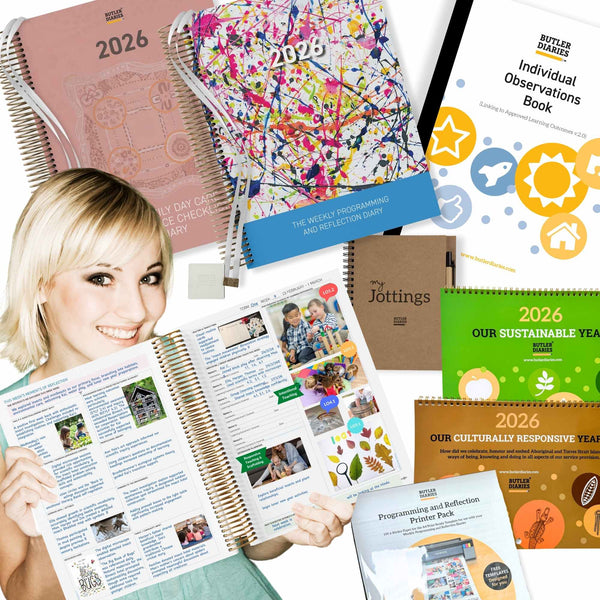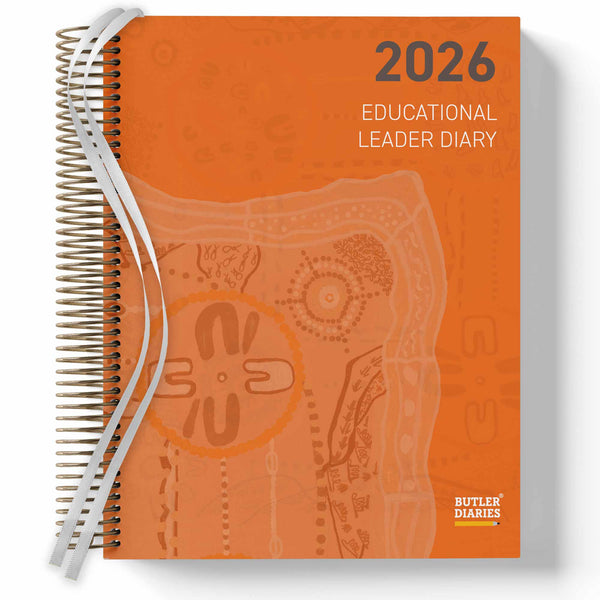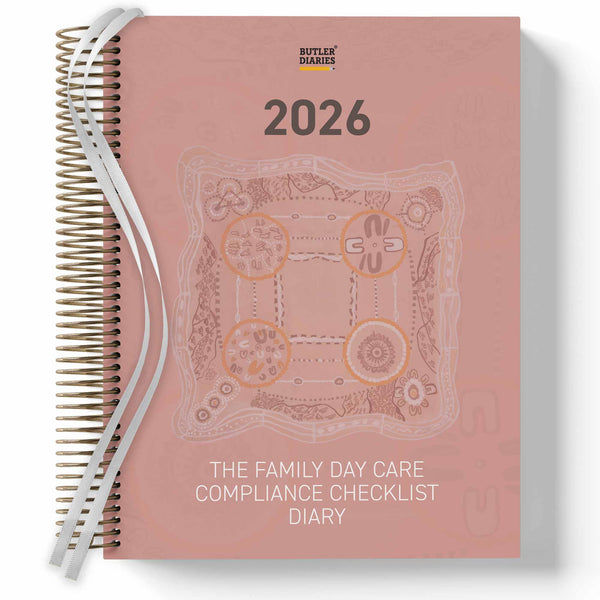Social and emotional development forms the foundation for how children understand themselves, interact with others, and navigate their emotions. As Early Childhood Educators (ECEs), it is crucial to foster these areas of development, ensuring children thrive both socially and emotionally. In this post, we’ll explore the key stages of social and emotional development, link them to the Early Years Learning Framework (EYLF) and Theorists and and provide tips for creating a program that supports this development, with guidance on how to effectively record your efforts in your Weekly Programming and Reflection Diary.
Stages of Social and Emotional Development in Early Childhood
Children progress through various stages of social and emotional development, and understanding these stages helps educators provide the right support and opportunities for growth.
-
Infancy (0-2 years): Building Trust and Attachment
During this stage, children form their first emotional bonds, particularly with their caregivers. They start to understand trust, security, and love. They express emotions through crying, smiling, and physical closeness. -
Toddlerhood (2-3 years): Autonomy and Exploration
Toddlers begin to assert their independence and explore the world. They may test boundaries and begin to experience a range of emotions such as frustration, joy, and empathy. At this stage, they start to play alongside others (parallel play) and learn about sharing and cooperation. -
Preschool Years (3-5 years): Initiative and Social Engagement
Children become more confident and start to engage in cooperative play, forming friendships, and learning about roles and responsibilities in group settings. They begin to manage emotions like frustration, jealousy, and happiness, developing emotional regulation skills. This is a crucial period for fostering empathy, understanding diversity, and promoting inclusive behaviour. -
Early Primary Years (5-6 years): Growing Emotional Awareness and Problem-Solving
By this stage, children have a greater understanding of their own feelings and those of others. They are learning to resolve conflicts, communicate their needs, and work collaboratively. They also become more aware of social norms and expectations.
How the Stages of Social and Emotional Development are Linked to Early Childhood Theorists
We can connect each stage with the theories of renowned early childhood theorists. These theories provide valuable frameworks that inform and enhance our practice as Early Childhood Educators, aligning with the Early Years Learning Framework (EYLF) outcomes. Below, we’ve linked key stages of development to major theorists and highlighted how their insights can guide programming and documentation in your Weekly Programming and Reflection Diary.
Infancy (0-2 years): Trust and Attachment
Linked Theorist: Erik Erikson – Stage: Trust vs Mistrust
Erikson's first stage of psychosocial development focuses on the infant’s need to develop trust in their caregivers and environment. When their needs for care, love, and security are met consistently, infants form a secure attachment, which lays the foundation for future emotional health.
-
EYLF Link: Outcome 1 – Children have a strong sense of identity. Building secure, trusting relationships helps children feel confident and safe.
-
Programming Tip: Include nurturing and responsive routines, such as soothing touch and consistent interactions, that foster a sense of trust. Record in your Diary or Observation Book how individual children respond to these practices and build trust over time.
Toddlerhood (2-3 years): Autonomy and Exploration
Linked Theorist: Lev Vygotsky – Social Interaction and Scaffolding
Vygotsky emphasised the role of social interaction in cognitive and social development. During toddlerhood, children begin to explore their independence but still rely on adults for support (scaffolding). Through social interaction, they develop language and learn social rules.
-
EYLF Link: Outcome 2 – Children are connected with and contribute to their world. Scaffolding their autonomy supports their connection to their environment.
-
Programming Tip: Create activities that encourage toddlers to make choices and explore with guidance. For example, provide opportunities for them to dress themselves or select materials for play. Document how scaffolding supports their autonomy and emotional development.
Preschool Years (3-5 years): Initiative and Social Engagement
Linked Theorist: Jean Piaget – Preoperational Stage
Piaget’s theory places preschool-aged children in the preoperational stage, where they start to engage in symbolic play, take on roles, and interact more socially. At this age, children are building the foundations for empathy, role-taking, and cooperation, although their thinking is still very egocentric.
-
EYLF Link: Outcome 3 – Children have a strong sense of wellbeing. Social engagement builds their emotional regulation and resilience.
-
Programming Tip: Incorporate dramatic play, role-playing scenarios, and group activities that encourage cooperation. This fosters initiative and collaboration while helping children practice taking the perspectives of others. Use your Diary or Observation Book to note how children interact with their peers, and track improvements in cooperation and empathy.
Preschool to Early Primary (5-6 years): Emotional Awareness and Problem-Solving
Linked Theorist: Erik Erikson – Stage: Initiative vs Guilt
In Erikson’s third stage, children develop a sense of initiative through social interactions. Successful social play and group activities help children develop confidence, while unresolved conflicts or lack of social support may lead to feelings of guilt.
-
EYLF Link: Outcome 4 – Children are confident and involved learners. Social problem-solving enhances both emotional development and learning through collaboration.
-
Programming Tip: Provide problem-solving opportunities where children can resolve conflicts or collaborate on projects. This encourages children to take initiative and understand consequences. Record instances in your Diary or Observation Book where children successfully resolve conflicts or demonstrate growing emotional awareness.
Holistic Development: The Role of Social and Emotional Skills
Linked Theorist: John Bowlby – Attachment Theory
Bowlby’s work on attachment theory highlights the importance of secure relationships in a child’s overall development. He believed that strong attachments in early years positively influence social and emotional growth throughout childhood. Securely attached children are more likely to explore, take risks, and engage positively with others.
-
EYLF Link: Outcome 5 – Children are effective communicators. Through secure relationships, children learn to express their needs and emotions clearly.
-
Programming Tip: Focus on building secure attachments with children by being responsive to their emotional cues and needs. Foster open communication through active listening and providing safe spaces for children to express their feelings.
Recording Observations in Your Weekly Programming and Reflection Diary
Linking these theories to your daily observations and reflections can help ensure that your programming is both informed by evidence-based practice and tailored to each child’s unique needs.
-
Record Theoretical Links: When observing children’s behaviours or responses, consider which developmental theories are most relevant. For example, if a toddler is testing boundaries, reflect on Vygotsky’s idea of scaffolding and how your guidance helps the child balance autonomy with social expectations.
-
Note Social Interactions: Piaget’s and Erikson’s stages emphasise the importance of social play and cooperation. Use your Diary to record group activities and how children navigate social dynamics, including instances of initiative, sharing, or conflict resolution.
-
Reflect on Emotional Growth: Bowlby’s attachment theory reminds us of the crucial role emotional security plays in development. Note how each child expresses and regulates emotions, and reflect on how your strategies are supporting their emotional development.
Linking Social and Emotional Development with the EYLF
The EYLF (Early Years Learning Framework) recognises social and emotional development as a key component of a child’s overall development, woven into all five learning outcomes:
-
Outcome 1: Children have a strong sense of identity
Fostering social and emotional skills helps children develop confidence in themselves and build secure relationships with others. -
Outcome 2: Children are connected with and contribute to their world
Educators can help children understand their roles within their communities, encouraging empathy and inclusivity. -
Outcome 3: Children have a strong sense of wellbeing
Social and emotional development promotes resilience, emotional regulation, and an understanding of how to seek help when needed. -
Outcome 4: Children are confident and involved learners
As children learn to collaborate and work through social challenges, they develop problem-solving skills and a sense of responsibility. -
Outcome 5: Children are effective communicators
Social interactions help children communicate their needs, express emotions, and develop listening skills that foster positive relationships.
Tips for Creating a Program that Supports Social and Emotional Development
Here are practical tips to integrate social and emotional development into your Early Childhood Education and Care (ECEC) program:
-
Create a Safe and Nurturing Environment
Ensure your learning environment fosters trust and security. Build strong relationships with children so they feel safe to express their emotions and explore their social world. -
Model Positive Social Interactions
Children learn by observing the adults around them. Be a role model for empathy, kindness, and respect in your interactions with both children and staff. When children see positive interactions, they are more likely to imitate them. -
Use Play to Teach Social Skills
Play is a powerful tool for social development. Incorporate cooperative games and activities that require teamwork, sharing, and communication. Storytelling, role-playing, and group projects can also help children practice empathy and understand different perspectives. -
Encourage Emotional Literacy
Help children recognise and label their emotions. You can use visual aids like emotion charts or storybooks that explore feelings, and incorporate mindfulness activities to build self-awareness and emotional regulation. -
Support Conflict Resolution
Teach children simple problem-solving techniques and guide them through resolving conflicts. Encourage them to express their feelings and find peaceful solutions. -
Provide Opportunities for Reflection
Regularly give children the chance to reflect on their social experiences. Discuss how they felt after a conflict or a moment of teamwork, helping them connect their emotions with their actions.
Recording Social and Emotional Development in Your Weekly Programming and Reflection Diary
Tracking social and emotional development is crucial for both assessment and reflective practice. Here’s how to effectively record it in your Weekly Programming and Reflection Diary:
-
Link Observations to EYLF Outcomes: When observing children's interactions, emotions, and social milestones, reference the relevant EYLF learning outcomes. This ensures your program remains aligned with the framework.
-
Document Specific Activities: Record activities that promote social and emotional development, such as group games, storytime that explores feelings, or role-playing sessions. Include notes on which children engaged and how they demonstrated progress in social interactions or emotional understanding.
-
Include Reflections on Behaviour and Emotions: Take time to reflect on each child's emotional and social behaviour. Did they resolve a conflict? How did they handle frustration? What strategies worked to calm an anxious child? Reflecting on these moments will help you adapt and enhance your program.
-
Plan for Individual and Group Development: Based on your observations, plan specific activities to support both individual children and the group as a whole. For instance, if you notice a child struggling with sharing, include targeted play-based activities that encourage turn-taking and cooperation.
-
Reflect on Your Practice: Use your Weekly Programming and Reflection Diary to critically reflect about what worked well in fostering social and emotional development and what could be improved. This will guide your future programming to better meet the needs of your learners.
Final Thoughts
By understanding the stages of social and emotional development and incorporating them into your programming, you are not only aligning with the EYLF and theories in Early Childhood but also ensuring that each child is supported as they grow into emotionally resilient and socially confident individuals. Recording these efforts in your Weekly Programming and Reflection Diary not only helps track progress but also allows for continuous improvement in creating nurturing and responsive learning environments.
In your role as an Early Childhood Educator, you have the opportunity to shape not just the minds of the children in your care, but their emotional and social hearts as well.






























